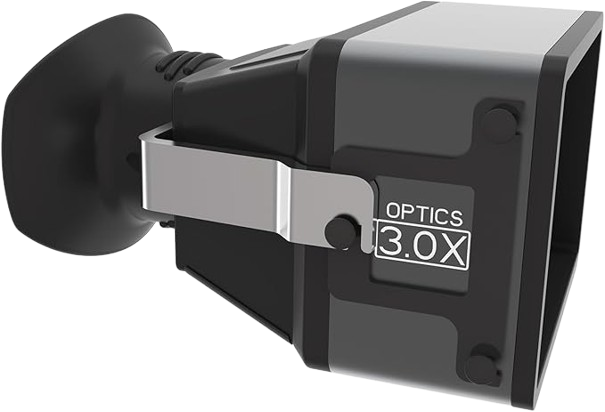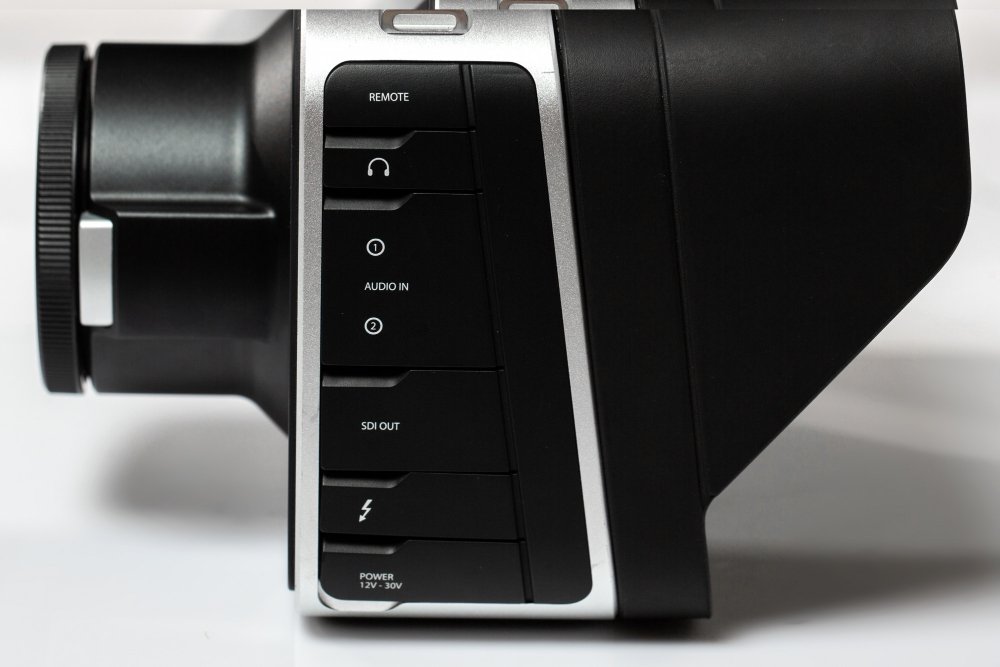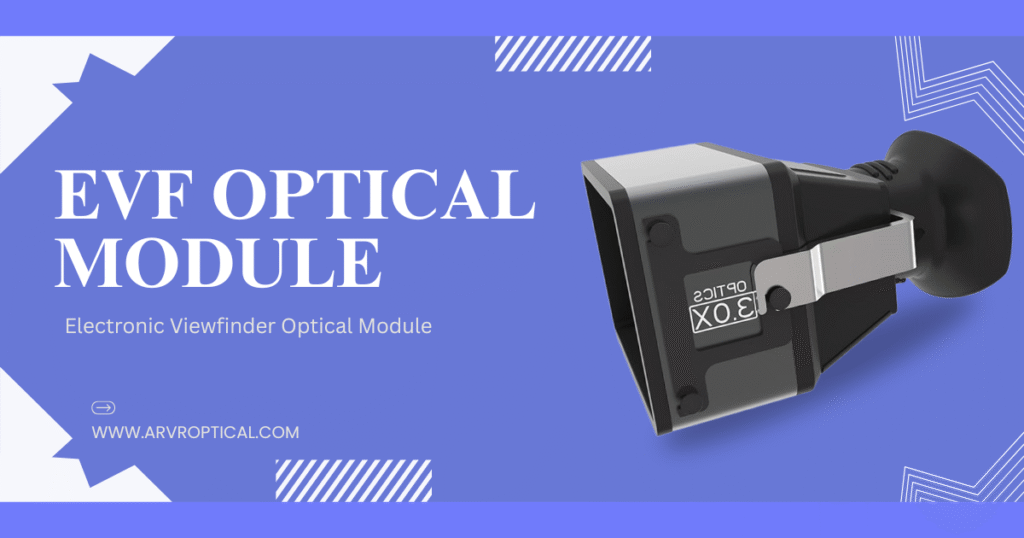The way we view and capture the world has changed dramatically in recent years, thanks to major breakthroughs in digital imaging. At the center of this transformation is the Electronic Viewfinder (EVF) optical module, a compact system that combines advanced optics with microdisplays to deliver real-time, high-quality visuals directly to the user’s eye.
Unlike traditional optical viewfinders, which rely on mirrors and prisms, EVF modules project a digital preview of the scene. This allows photographers, videographers, and even AR/VR device users to see exactly what the sensor captures, complete with exposure settings, focus aids, and real-time adjustments.
In this article, we’ll explain what an EVF optical module is, how it works, its benefits, how it compares to optical viewfinders, and what the future holds for this fast-evolving technology.
What Is an EVF Optical Module?
An EVF (Electronic Viewfinder) optical module is the modern digital replacement for traditional optical viewfinders. Instead of relying on mirrors and prisms, it uses a microdisplay, optical lenses, and sensor integration to project a live digital preview of what the camera or device sees.
Purpose
To provide users with a clear, accurate, real-time view of the final image or video.
Key Advantage
What you see in the EVF is exactly what the sensor captures—exposure, depth of field, and color are displayed precisely as they will be recorded.
Why EVFs Define Modern Mirrorless Cameras?

Today, EVFs are one of the most defining features of mirrorless cameras, replacing the bulky mirror box of DSLRs while delivering greater flexibility and more advanced functionality. This shift not only makes cameras lighter and more compact but also improves the shooting experience with real-time previews and digital overlays.
How Does an EVF Optical Module Work?
The EVF optical module works by blending advanced sensor technology, microdisplays, and precision optics to deliver a real-time view of the scene. Instead of relying on a traditional mirror and prism system, it converts light into a digital preview, giving photographers and videographers greater accuracy and control.
Here’s a step-by-step breakdown of the process:
- Image Sensor Capture – The camera’s image sensor collects incoming light and instantly converts it into a digital signal.
- Microdisplay Rendering – That signal is transmitted to a tiny display, usually a micro OLED, LCOS, or LCD screen, which presents a live, high-resolution image.
- Optical Lens System – A set of precision lenses magnifies the microdisplay so the scene appears natural and lifelike through the viewfinder.
- Visual Enhancements – Elements like polarizers, prisms, and anti-reflective coatings are often added to reduce glare, improve brightness, and enhance overall clarity.
Types of Displays in EVF Modules
Electronic Viewfinder (EVF) modules use different display technologies, each offering unique strengths in image quality, performance, and cost. Choosing the right type of display depends on the balance between clarity, speed, and budget.
OLED (Organic Light-Emitting Diode)
- Provides exceptional contrast and true blacks, thanks to its self-emissive pixels.
- Offers faster refresh rates, making it ideal for capturing fast-moving subjects.
- Commonly used in high-end mirrorless cameras and premium EVF systems.
LCD (Liquid Crystal Display)
- More affordable and widely available compared to OLED.
- Performs well in daylight but can struggle in low-light environments.
- Suitable for entry-level and mid-range cameras where cost efficiency is key.
LCOS (Liquid Crystal on Silicon)
- Acts as a hybrid display that combines the sharpness of LCD with the efficiency of OLED.
- Delivers high resolution and minimal pixelation, making it popular in professional-grade equipment.
- Often used in cinema cameras, projectors, and advanced optical gear.
Key Components of an EVF Optical Module
An EVF optical module combines multiple elements to deliver a clear, real-time view of the scene. Each component plays a vital role in image quality, comfort, and functionality.
Microdisplay (OLED, LCOS, LCD)
- Acts as the core display unit of the EVF.
- Determines the resolution, brightness, color accuracy, and refresh rate of the preview.
- Advanced microdisplays like OLED provide deep contrast, while LCOS and LCD offer cost-effective alternatives.
Optical Lenses
- Magnify and project the microdisplay image so it appears natural to the human eye.
- Ensure comfortable viewing without distortion, even during extended use.
Prisms & Polarizers
- Enhance light transmission for a brighter and sharper view.
- Reduce unwanted reflections and distortion, improving overall image clarity.
Electronic Integration
- Syncs the camera’s image sensor with the microdisplay.
- Enables a real-time live feed so what you see in the EVF matches the final capture.
Housing & Eyecup
- Protects the delicate optics and electronics inside the EVF module.
- The eyecup blocks external light, creating an immersive and distraction-free viewing experience.
Benefits of EVF Optical Modules

EVF optical modules bring unique advantages to both end-users and device manufacturers, enhancing how images are captured and how devices are designed.
For Photographers & Videographers
- Real-Time Exposure Preview – The EVF shows how brightness, contrast, and white balance will appear in the final shot, reducing guesswork.
- Enhanced Low-Light Performance – EVFs amplify the signal, making it easier to compose and focus in dark environments.
- Advanced Focus Tools – Features like focus peaking and digital zoom enable precise manual focusing, essential for professional shooting.
- On-Screen Information Overlays – Useful aids such as histograms, grids, and level indicators appear directly in the viewfinder, improving accuracy.
Benefits for Device Makers
- Compact & Lightweight Design – Eliminates the need for bulky mirrors and prisms, enabling slimmer and lighter devices.
- Flexible Integration – EVF modules fit into a wide range of devices, from mirrorless cameras and camcorders to AR/VR headsets and smart glasses.
- Improved Energy Efficiency – Modern OLED-based EVFs consume less power while delivering superior image quality, extending device battery life.
EVF Optical Modules vs Traditional Optical Viewfinders (OVF)
One of the biggest debates in photography circles is EVF vs OVF. Here’s a direct comparison:
| Feature | EVF Optical Module | Optical Viewfinder (OVF) |
|---|---|---|
| Size & Weight | Compact, no mirror needed | Bulky, mirror box required |
| Preview | Digital live view with exposure preview | Optical-only, no exposure feedback |
| Features | Focus peaking, overlays, digital zoom | Pure optical, no enhancements |
| Low-Light Performance | Strong (digital amplification) | Limited to natural light |
| Learning Curve | Easier for beginners (WYSIWYG) | Requires experience to judge exposure |
In short: EVFs provide more control and flexibility, while OVFs offer a purely optical, lag-free experience.
Current Applications of EVF Optical Modules
EVF optical modules go far beyond photography. Their compact size, sharp resolution, and real-time display have made them valuable across consumer, professional, and industrial devices.
- Consumer Cameras – Widely used in mirrorless cameras such as Sony Alpha, Canon EOS R, and Nikon Z series, EVFs replace bulky optical systems while providing accurate previews.
- Professional Videography – Integrated into digital camcorders and cinema cameras, EVFs allow filmmakers to monitor exposure, focus, and color with precision.
- AR/VR Headsets – Compact EVF-style modules with micro OLED displays power immersive experiences in augmented and virtual reality devices.
- Defense & Industrial Optics – EVFs play a critical role in night vision scopes, surveillance equipment, and thermal imaging devices, where clarity and reliability are essential.
Future Applications & Innovations in EVF Modules
The future of EVF optical modules is closely linked to breakthroughs in microdisplay technology, optics, and AI-driven imaging tools. Emerging trends suggest EVFs will become more powerful, compact, and energy-efficient, shaping the next generation of cameras and wearable devices.
- Thinner & Smaller Modules – Optimized for ultra-compact cameras and smart glasses, enabling lightweight designs without sacrificing image quality.
- Micro OLED + Pancake Optics Integration – A game-changer for AR/VR headsets, combining high resolution with compact optical systems.
- AI-Powered Overlays – Intelligent EVFs that provide real-time exposure guides, composition tips, and automatic corrections for both professionals and hobbyists.
- Higher Refresh Rates (120Hz and Beyond) – Delivering smoother motion capture and video playback, crucial for fast-paced photography and immersive virtual experiences.
- Energy-Efficient Designs – New EVF modules will prioritize battery life and power efficiency, making them ideal for portable devices like mirrorless cameras and smart wearables.
📊 Market Insight: The global electronic viewfinder (EVF) market was valued at USD 1.26 billion in 2023 and is projected to grow at a compound annual growth rate (CAGR) of over 8% between 2024 and 2032, driven largely by increasing demand for mirrorless cameras and AR/VR headsets. [Global Market Insight]
Challenges and Limitations of EVF Optical Modules
While EVF optical modules offer major advantages, they also come with several limitations that impact both users and manufacturers:
- High Power Consumption – Because EVFs rely on continuous digital display, they drain batteries faster than traditional optical viewfinders.
- Lag in Budget Models – Entry-level EVFs may suffer from slight delays between sensor capture and display output, affecting real-time shooting.
- Cost Factor – Premium EVFs that use micro OLED technology add to production costs, raising the overall price of cameras and AR/VR devices.
- Color Accuracy Issues – Since EVFs depend on display calibration, colors in the viewfinder may not perfectly match the final image or video output.
Manufacturers are addressing these challenges by developing more efficient microdisplays, reducing power usage, and lowering production costs to make EVFs more accessible.
Conclusion
The EVF optical module is more than just a viewfinder—it serves as a gateway to the future of digital imaging and immersive experiences. By seamlessly combining advanced optics, high-resolution microdisplays, and real-time processing, EVFs provide unmatched clarity, control, and creative freedom for photographers, videographers, and device developers.
From mirrorless cameras to AR/VR headsets, EVF modules are transforming the way we interact with digital visuals. As technology continues to advance, these modules are expected to become smaller, sharper, and smarter, enabling innovations across professional photography, immersive media, and next-generation wearable devices.

